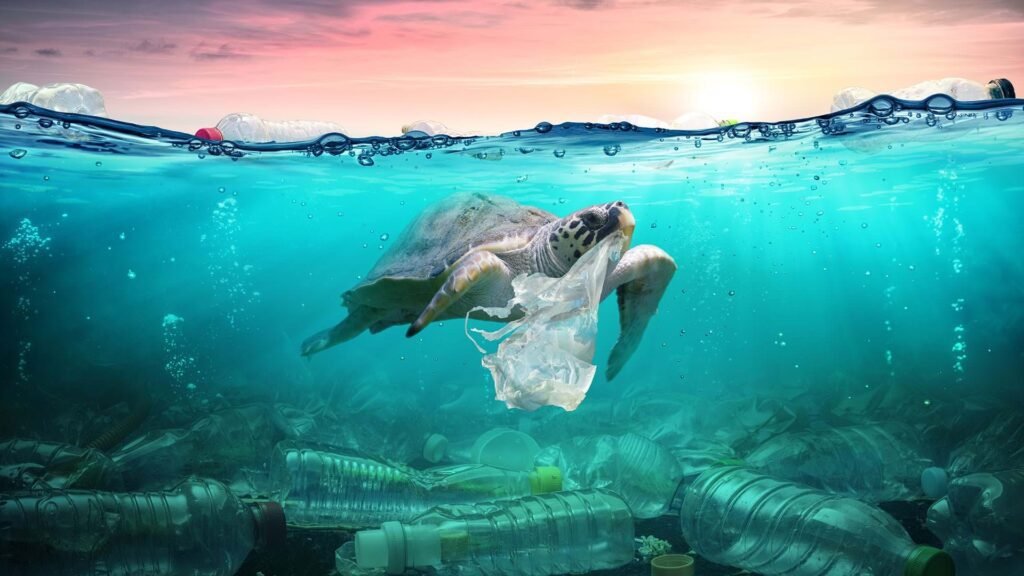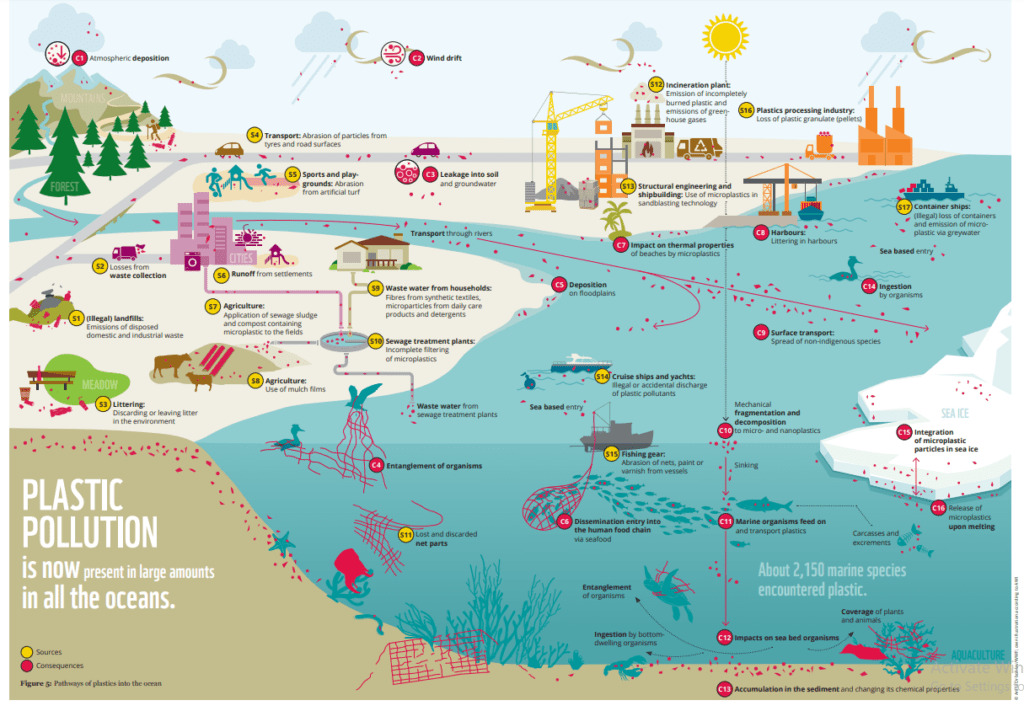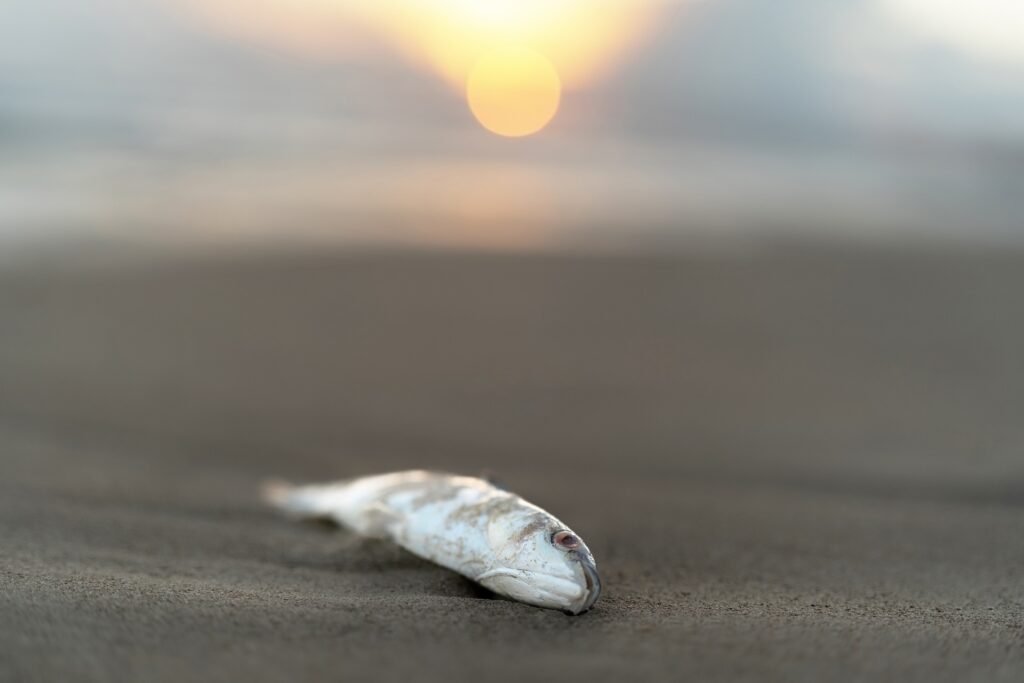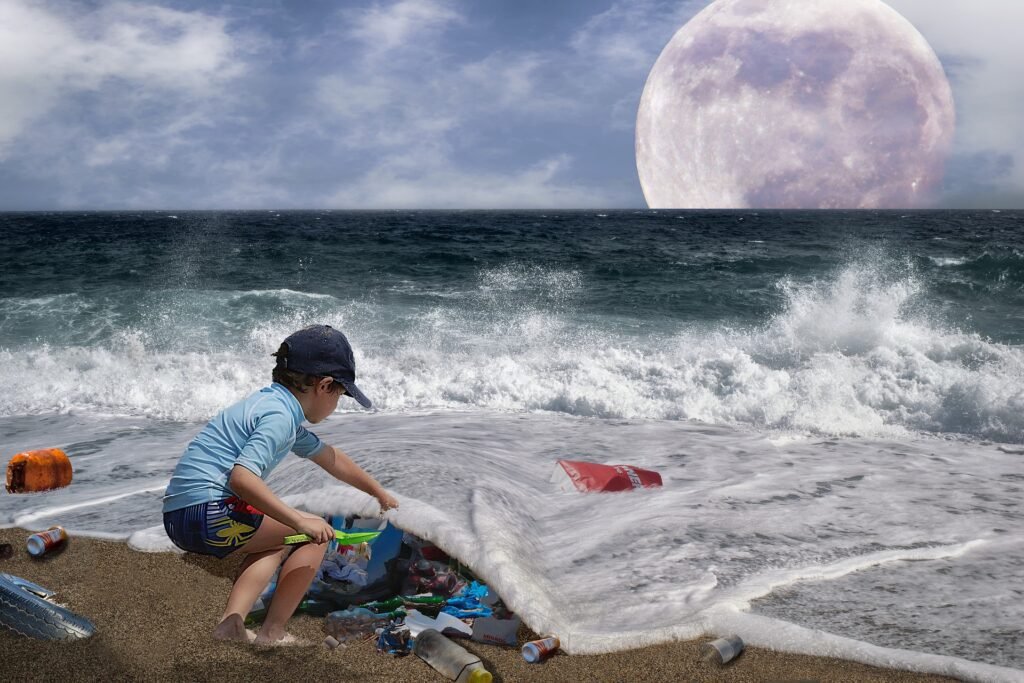Reports say that by 2050 there may be more plastic than fish in the ocean, or perhaps only plastic left. Marine microplastic levels would be more than double by 2050– and some scenarios project a 50-fold increase by 2100.
More plastic than fish in Ocean

Threats to our planet
Tons and tons of plastic waste choke our oceans, lakes, and rivers. The plastic trash piling up on land is harmful to plants and wildlife. The following 10 facts shed light on how plastic is proving dangerous to our planet, health, and wildlife.
- Every minute, two garbage trucks of plastic are dumped into our oceans. Currently, 8 million metric tons of plastic wind up in the oceans. The amount of plastic waste that flows into the oceans every year would triple by 2040 and reach 29 million metric tons.
- There is more microplastic in the ocean than there are stars in the Milky Way.
- There are five massive patches of plastic in the oceans around the world. One patch in particular, known as the “Great Pacific Garbage Patch” covers 20 million square kilometers of water.
- By 2050 there will be more plastic in the oceans than there are fish by weight.
- Plastic pollution in the ocean kills over 1 million marine organisms each year. Animals who eat plastic often starve because the plastic prevents them from swallowing food.
- Animals are now colonizing the Great Pacific Garbage Patch, meaning that they are consuming plastic waste. ll of these developments disrupt the natural marine ecosystem
- Many animals at the base of the food chain eat microplastics. Then human beings and other animals consume them.
Impact of plastic waste on marine ecology

Plastic pollution harms marine life through entanglement, ingestion, smothering, and chemical leaching. Plastic pollution is now found everywhere in the ocean, and almost every marine species encounter it. According to current research, a total of 2,141 species have so far been found to encounter plastic pollution in their natural environments.
Experts predict that 90% of our coral reefs may be dead, waves of mass marine extinction may be unleashed, and our seas may be left overheated, acidified, and lacking oxygen.
INTERACTIONS WITH NATURE: Plastic pollution harms marine life through entanglement, ingestion, smothering and chemical leaching

Steps to protect ocean future
Freeze the warming:
Stopping climate change is the hardest but most important step we can take for ocean health. We now need ambitious national commitments to achieve carbon neutrality from all signatories of the Paris Agreement.
Walk the talk:
We need to make these carbon neutrality commitments real. This requires massive new investment in renewable energy sources and open minds to make older low-carbon energy solutions safer and more viable.
We need to fast-track the development of sustainable next-generation batteries to store this energy intelligently across our grids.

Blue revolution:
Ocean farming, or aquaculture, has increased by more than 1,000% in the ocean recently, which results in chemical pollution, genetic pollution, and habitat destruction. But the blue revolution can still clean up its act. Farming in the right places, with the right species, and with the right practices could make aquaculture a win for human and environmental health.
End plastic pollution:
Plastic pollution is the ocean’s new cancer. We need to ban unnecessary plastics and tax other single-use plastics. We need research and tech to prevent plastics from leaking into the sea, overhaul our recycling systems, and design economically viable alternatives to plastics.

Land:
We can help the ocean by first setting a few things right on the land. Increase our ambition to save our forests, thus locking up a huge chunk of carbon dioxide. It requires to stop wastefully spilling megatons of costly fertilizers into rivers that are creating hundreds of marine dead zones.
Wired ocean:
We need more ocean data. This includes new tech to detect illegal fishing and connect sustainable fishers to consumers. Technology must help endangered marine wildlife co-exist with the ocean industry and fleets of environmental sensors above and below the water to better study our rapidly changing ocean.
Ocean Equity:
To build a healthy ocean, we must ensure all people have a fair stake in its success. The fate of the ocean will affect people in all communities. Thus, we need people from all communities in ocean science, management, and policy.









